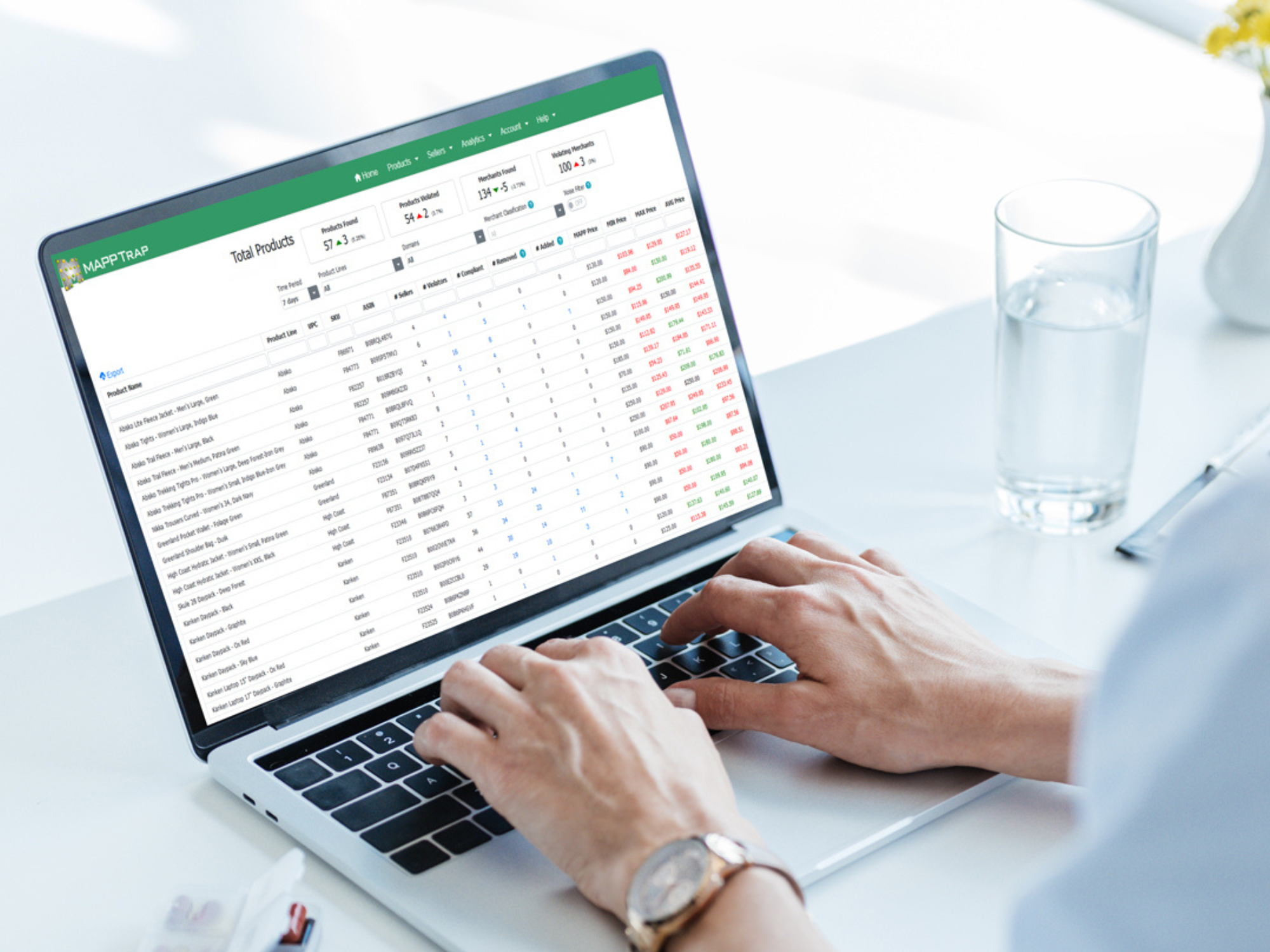Implementing MAP policies is a great way to enforce pricing integrity across your e-commerce brand, and it’s recommended that all companies selling online have a MAP strategy in place. Though MAP policies are important and do a lot for protecting your pricing, they’re not the only way.
What if you could employ some other strategies beyond MAP policies to keep resellers from hurting your brand by violating your pricing expectations?
Here are some tips on how to enforce pricing integrity in addition to your MAP policies:
1. Conduct Comprehensive Market Analysis

One way to encourage resellers to respect your brand’s pricing is to make sure you are pricing your product fairly (and competitively) from the get-go. Unfortunately, many online sellers make the mistake of setting a price for their product without doing enough research to determine what that price should be.
In any case, conducting a detailed market analysis is foundational for any brand aiming to maintain pricing integrity for your brand. Though it’s a good idea to conduct a comprehensive market analysis before even deciding to sell online, conducting market analysis at various stages of the sales lifecycle can be extremely beneficial.
A comprehensive market analysis should include looking into:
-
Direct competitors but also indirect competitors
-
Substitute products and general market trends
-
By understanding what’s going on in the market
By doing this, your brand can set prices that are competitive yet reflect the true value of your products, which may proactively prevent resellers from wrongfully pricing your product.
2. Implement Dynamic Pricing Models

Next, consider implementing dynamic pricing models based on the results you uncovered in the last step. A lot of sellers may feel that it’s better to stick to one price to hold the product and brand’s value and that changing the pricing consistency can impact the perceived value.
However, the reality is that dynamic pricing models represent a sophisticated approach to pricing, allowing brands to adjust their prices in response to real-time market conditions, thereby giving customers the ability to afford your product despite what’s impacting their own wallet.
This strategy can be particularly effective in industries where demand fluctuates significantly, but it can really work in any industry with any product or solution. By leveraging technology to analyze data on market demand, competitor prices, and other relevant factors, brands can ensure their pricing strategies remain relevant and competitive without undermining their value, keeping a loyal group of customers in the process.
3. Build Strong Relationships with Retailers
It may go without saying, but playing the numbers game for pricing doesn’t account for how humans actually operate (even if it can predict, to some degree, how we make our purchasing decisions). Relationships are the cornerstone of any strong business, and how brands and retailers interact is important when it comes to honoring price integrity. Just as word-of-mouth and referrals go a long way in business and networking, the same goes for selling online. If you’re able to foster strong relationships with resellers, the rest will fall into place.
This is because resellers who know you, value your business, and enjoy working with you are much more likely to respect your pricing than those who don’t know you and simply look at the relationship as solely transactional. So, take the time to foster those relationships by getting to know who you’re working with and/or reaching out to your network for reliable sellers. Everyone wants to rush to market, but ultimately, the time taken to build these relationships is when you establish agreed-upon pricing strategies that you can revisit and update in the long term.
4. Educate Customers on Product Value

In addition to fostering relationships with resellers, don’t forget to educate both your direct customers and the customers of your resellers about the significance of pricing and product value. This emphasis on education underscores the importance of understanding the factors that justify a product's price.
But how exactly do you do this? After all, customers don’t really want to be lectured on this, right?
Well, “educating” in this context is more about being transparent and explaining to customers the value of your products, which simultaneously does the job of justifying pricing and maintaining brand integrity overall. Here are some ways to do this right on your landing page or product page.
-
Blogs and articles: Adding blog posts and how-to pieces to your product page not only brings value to your product but can also contribute to lead generation.
-
Video demonstrations: Many e-commerce brands opt to create videos showing how the products work or of customers using the products with affiliate marketing on social media platforms.
-
Interactive product pages: In addition to video, you can also design product pages with interactive elements that allow customers to see the benefits of different features or customizations, depending on whether it makes sense for the product.
-
Customer testimonials and reviews: If you don’t have this already, one way to validate your product’s value is with social proof. You can do so by featuring stories and highlighting reviews from happy customers.
-
Comparison charts: Provide charts that compare your products with competitors. You can also do this with blogs.
-
Transparency reports: Publish reports or blog posts detailing your sourcing and manufacturing processes and how these contribute to the product's value. This could be on an “about” page or even in your product’s description.
-
FAQ sections: To go off the above, a surefire way to enforce pricing integrity is to address common questions highlighting the product's value, sustainability practices, and other aspects that justify its price in an easy-to-find and easy-to-read FAQ.
-
List unauthorized sellers: Many online stores sell products without the brand’s permission. These merchants may be selling counterfeit, gray-market, or out-of-warranty goods. Naming these sellers on your website shows your customers that you care about them and your products.
By providing these educational materials to your own customers — while also providing them to your resellers to provide to their customers — you can be one step ahead of the audiences’ questions. By fostering an understanding of the value behind their products, brands can build customer loyalty and justify their pricing strategies, even in the face of lower-priced competitors.
5. Leverage Data Analytics and AI for Market Monitoring
Wouldn’t it be great if there was one streamlined way to employ a majority of these strategies? And you don’t need to go about this manually.
There are so many tools out there that can make it easier to not only do all of the above (and more) but also help you enforce those MAP policies. This is due to the advent of data analytics and AI, which has made market monitoring that much easier. These technologies offer unparalleled capabilities in e-commerce.
By integrating data analytics and AI into their market monitoring strategies, brands can gain real-time insights into their pricing environment, enabling proactive adjustments to their pricing strategies.
Enforce Pricing Integrity With MAPPTrap
In today’s fast-paced market, it’s beneficial for online sellers to have multiple strategies at their disposal that they can employ to enforce pricing integrity. Doing so will likely result in you having to chase down fewer people who are potentially violating your MAP policies and maintaining the value your brand promises to deliver.
But, the fact of the matter is that people will still violate your policies, no matter how good you are at employing these strategies (which you should!). The only formal way to take down unauthorized sellers is to implement MAP pricing policies and Authorized Reseller programs and enforce them at all costs.
To do this, MAPP Trap simplifies this complex process. As an advanced tool for monitoring and enforcing pricing policies, MAPP Trap provides real-time insights, compliance checks, and effective enforcement enabling brands to uphold their pricing strategies effectively.
Embrace MAPP Trap to safeguard your brand's pricing integrity and reputation efficiently. Try a free demo today!